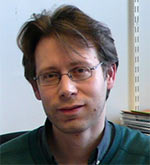Mar
15

Date: 15 March 2023
Time: 10:00 AM ET (New York Time)
Presenter(s): Dr. Pierre Borgnat
SPS-DSI Webinar Series: Data SciEnce on GrAphS (DEGAS)
Initiated by the Data Science Initiative of IEEE Signal Processing Society, the DEGAS Webinar Series serves to provide the SP community with updates and advances in learning and inference on graphs. Signal processing and machine learning often deal with data living in regular domains such as space and time.
This webinar series will cover the extension of these methods to network data, including topics such as graph filtering, graph sampling, spectral analysis of network data, graph topology identification, geometric deep learning, and so on. Applications can, for instance, be found in image processing, social networks, epidemics, wireless communications, brain science, recommender systems, and sensor networks.
Webinars are hosted on Zoom, with recordings available on the IEEE SPS YouTube channel following the live event. Each speaker presentation is followed by time for Q&A and discussions.
Biography
 Pierre Borgnat Pierre Borgnat is Senior Researcher at CNRS (Directeur de Recherche), at the Laboratory of Physics, ENS de Lyon, France. He received the Ph.D. degree in Physics and Signal Processing in 2002, and the HDR (Habilitation à Diriger des Recherches) in Signal Processing in 2014. He was a CNRS Chargé de Recherche since 2004, and is now Directeur de Recherche since 2016. His research interests are in statistical signal processing, and especially in graph signal processing and signal processing and machine learning for networks or graphs.
Pierre Borgnat Pierre Borgnat is Senior Researcher at CNRS (Directeur de Recherche), at the Laboratory of Physics, ENS de Lyon, France. He received the Ph.D. degree in Physics and Signal Processing in 2002, and the HDR (Habilitation à Diriger des Recherches) in Signal Processing in 2014. He was a CNRS Chargé de Recherche since 2004, and is now Directeur de Recherche since 2016. His research interests are in statistical signal processing, and especially in graph signal processing and signal processing and machine learning for networks or graphs.
He has interests in complex networks, nonstationary signals, scaling phenomena, dynamic networks. He works on methodological developments in these domains and studies several applications of these signal processing and machine learning methods: data processing for physics, for climate modeling, analysis of social data, transportation studies, Internet traffic modeling and measurements, data analysis in Economy, Geography and in Neuroscience. He was Chair of IXXI (Complex System Institute in Rhône-Alpes) from 2014 to 2020. He was General Co-Chair of the Conference on Complex Systems CCS 2021, and he will be Program co-Chair of EUSIPCO 2024. He leads the “Signal, Systems and Physics” group at LP ENSL since 2020. He has been Associate Editor of the IEEE Trans. on Signal Processing (2015-2019) and is currently Senior Area Editor of the same Transactions since 2019.
Abstract
The obtention of good distances (or of metric) between objects is an important step for many Machine Learning or Data Processing methods. For structured data such as graphs, Optimal Transport (OT) has received much attention both from the ML community and from the Graph Signal Processing perspective. This especially allowed to address graph classification or graph transfer learning tasks. From our work, I will discuss two novel propositions that combine graphs (structure) and signals (attributes) using Optimal Transport for two situations: i) a new OT-based distance, called Diffusion Wasserstein distance, that generalizes Wasserstein distance to attributed graphs thanks to the application of a graph filter (e.g. heat diffusion) combining structural and feature information, and that both provides a significant performance boost when solving graph domain adaptation tasks; ii) a Metric Learning algorithm for OT-based distance between attributed graphs. Many Metric Learning algorithms have been developed in recent years, yet none for attributed graphs despite the interest of learning distances for better discriminating between graphs. We designed a novel Simple Graph Metric Learning (SGML) model, built from OT yet scalable and with few trainable parameters, that allows us to learn an appropriate metric from a set of labeled (attributed) graphs, so as to improve classification procedures.
